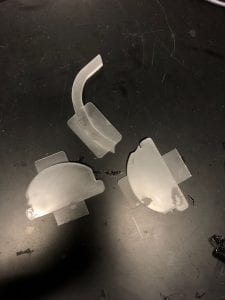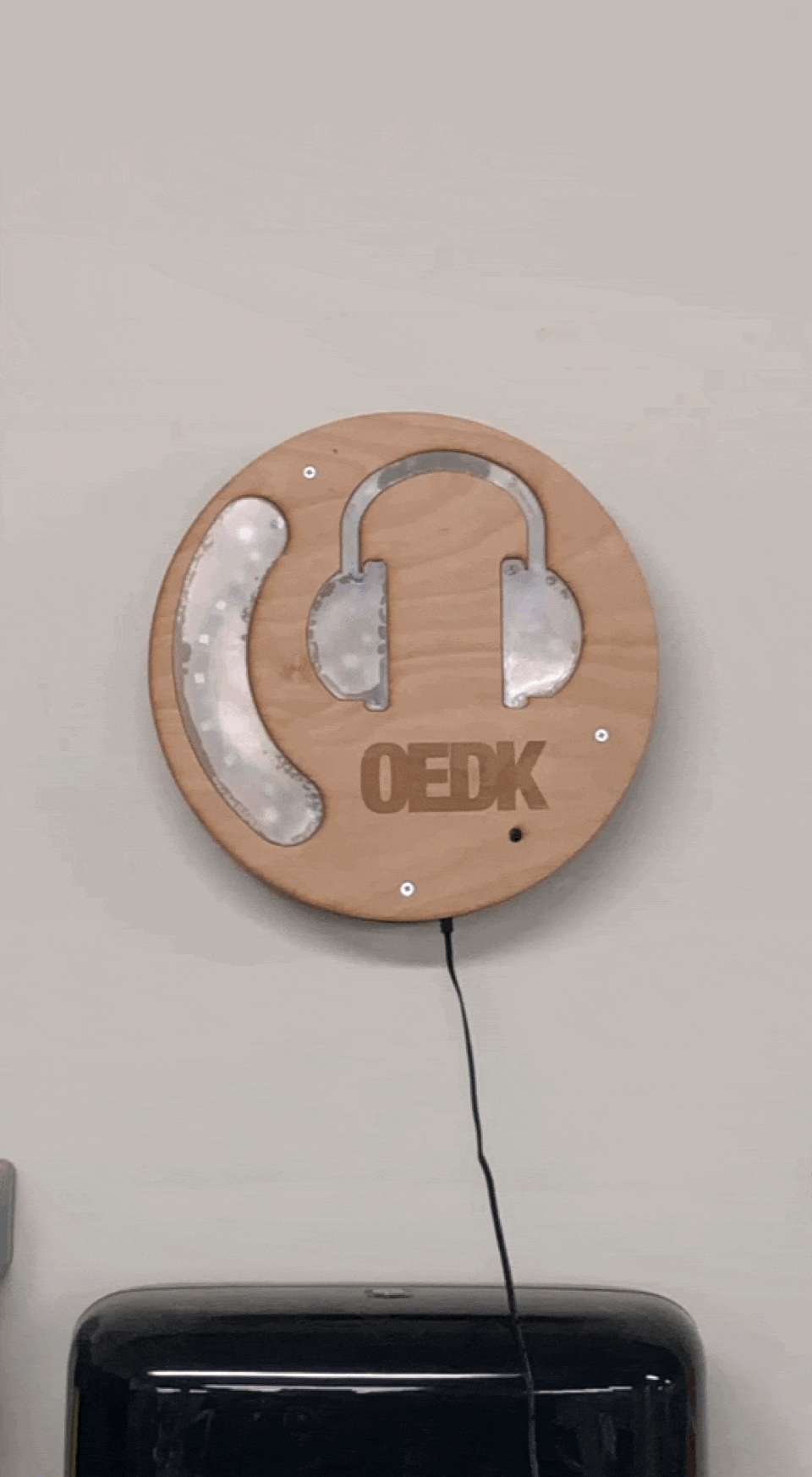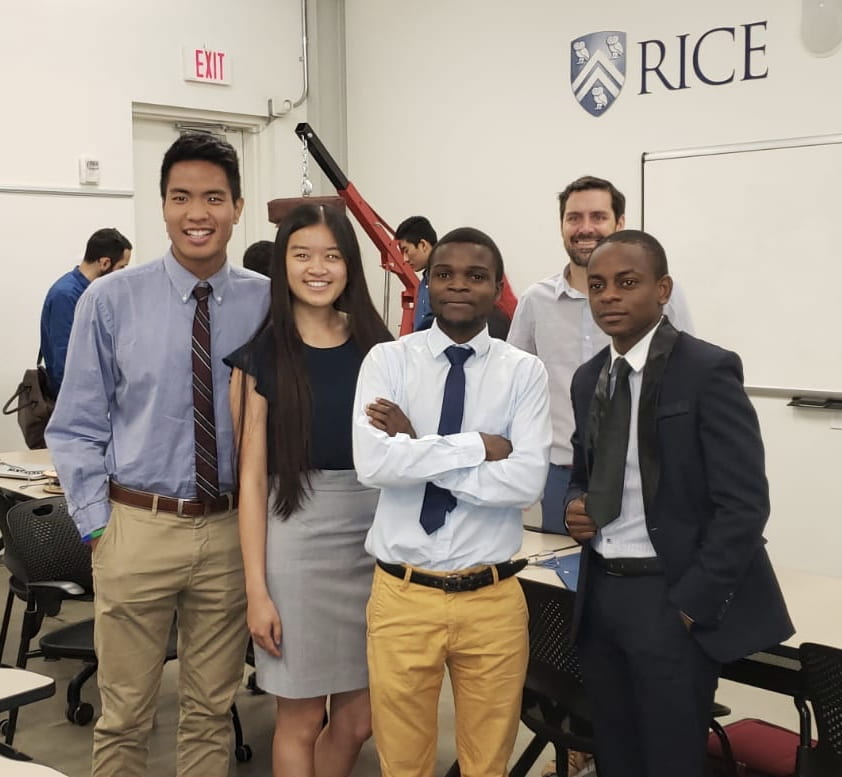Wow. It’s really the end of SEED. When I woke up this morning it still hadn’t fully hit me. It’s commonly said that time flies when you’re having fun, and I think that statement accurately summarizes my time at the OEDK this summer.
At the end of my last blog, I mentioned that we had all of our parts ready to go and to be assembled. Well… life (and our grips, apparently) had other ideas. Audrey, Wilson, and I each dropped and broke one of our acrylic inserts on three separate occasions. You’d think we’d be more careful with them considering how expensive acrylic is, but it really seemed like they had a mind of their own.
Anyway, our mishandling didn’t matter too much; we still had the parts to assemble at least one fully functional device by the end of last Friday, and we did just that. It was pretty cool to finally see the fruits of our labor.
On Monday, we laser cut and sandblasted new pieces of acrylic to replace the ones we broke. Also, now that we had one device assembled, we were able to begin formal testing. We started with our test for aesthetic appeal by asking users of the OEDK to view our device without the flashing warning, and then with the flashing warning. The users then ranked two statements on a Likert scale from 1-5 based on how well they agree with those statements (with 1 being “strongly disagree” and 5 being “strongly agree”). We got a lot of positive feedback from the test, and our average score was well above our target value of 3.5.
We then conducted our test for cost by looking up the cost of all the materials we used and then adding them together. Our target value was for each unit to cost less than $100. After doing the calculations, each device should cost about $93, which is much less expensive than the existing solutions on the market that can reach up to $500 per unit.
After that, we conducted our test for visibility. We swept a semicircle with a 15 foot radius around our device and had OEDK users sit at every worktable in that semicircle and see if the device’s flashing alert was visible to them. Users had no problem seeing the alert, so that was another success for us.
Throughout all of the testing, we were continuing to assemble devices to reach our target of 6. By Thursday morning we had 4 ready to go!
One of the goals of our project was to eventually make it open source. We created a device assembly guide and posted it on instructables.com in hopes that it can be easily replicated and implemented in makerspaces across the country.
On Thursday, Audrey and Wilson gave our final presentation. We got really good feedback on our device, and thus marked an end to SEED!
But It’s Not Really the End
SEED has been such a great experience for me. I’m very happy with how our project turned out how much I’ve learned this summer. I’m especially thankful for the opportunity to work with my new friends from Malawi and Tanzania. Their friendships are something I’ll always remember, and even though they’re traveling back home, I’ll still keep in touch with them.
I’ll appreciate the short break I’ll have when I go back home, but after SEED, I’m more excited than ever before to come back to Rice and continue working at the OEDK where every time I look up and see one of our devices in use, I’ll remember all of the memories from this summer.
*drops mic*





What a well-written blog, both organized and clear. I am so pleased you have established lasting friendships with the participants from Malawi and Tanzania and that you are so enthusiastic about coming back to Rice. I agree that your project and both formal presentations of your team’s work went well.
You have helped to build a device that positively affects everyone at OEDK.
I, too, will connect it with you and the rest of your team whenever I visit OEKD. I hope to see you there often.